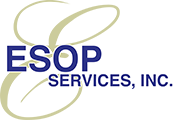Treatment of Dividends Is an Issue
By Ronald J. Gilbert – ESOP Services, Inc.
August 20, 2008
The Cost Accounting Standards Board (CASB) issued a final ruling in May 2008 that applies to federal government contractors who sponsor ESOPs. The effective date of 48 CFR Part 9904 was June 2, 2008. It amends CAS 412 and 415.
At the heart of the matter is the “allowable cost” that federal government contractors may claim for contributions or dividends paid to an ESOP. The CASB ruling states that the “contractor’s cost shall be measured by the contractor’s contribution, including interest and dividends if applicable, to the ESOP”. The CASB did not use the GAAP approach in SOP 93-6, which measures compensation expense for a leveraged ESOP based on the fair-market value of shares released in a year. Under certain types of federal government contracts, the company is reimbursed by the federal government for the ESOP contribution. Both cash and stock contributions are allowable costs, and thus are reimbursable. There is no distinction between S Corporation and C Corporation ESOPs.
Dividends May Still be an Issue
While the CASB ruling quoted above specifically includes dividends, The ESOP Association has learned that at least one DCAA regional office has disallowed dividends as an allowable cost. In doing so, they site Federal Acquisition Regulation (FAR) 31-205-6(i)(2), which disallows “any compensation represented by dividend payments or which is calculated based on dividend payments”.
The dividend payments that were disallowed were made before the effective date of June 2nd. The ruling came after June 2nd. One might assume that contributions or dividends made to an ESOP after June 2nd would be subject to CASB ruling. However, CASB rulings deal with allocation and measure of costs, and the FAR deals with allowability. The disallowance made reference to this distinction and to language in the CASB ruling that says, “The board further notes whether interest or other cost components associated with financing a leveraged ESOP are allowable cost is determined under FAR 31. The final rule does not in any manner preclude the FAR counsel from drafting rules that explicitly allow or disallow interest or any other cost component associated with an ESOP.”
The CASB ruling gives a number of examples to clarify the ruling, recognizing that not only the timing of the contribution but also the timing of the ESOP allocation that results from the contribution determines if the contribution will be an allowable cost. This is consistent with IRS rules for ESOPs. Unfortunately, none of the examples mention dividends.
As a result, federal government contractors would be WELL ADVISED to consult with their professional advisors, and possibly their local DCAA office, if they are planning to claim dividends as an allowable cost.
Certainty
With exception of the dividend issue, federal government contractors now have the greatest degree of certainty that they have ever had regarding the treatment of ESOPs contributions as an allowable cost.
Valuation Oversight
Keep in mind that ESOP stock valuations remain subject to DCAA audit. Should the DCAA determine that ESOP shares were over valued, the DCAA could attempt to disallow a portion of an ESOP contribution.
